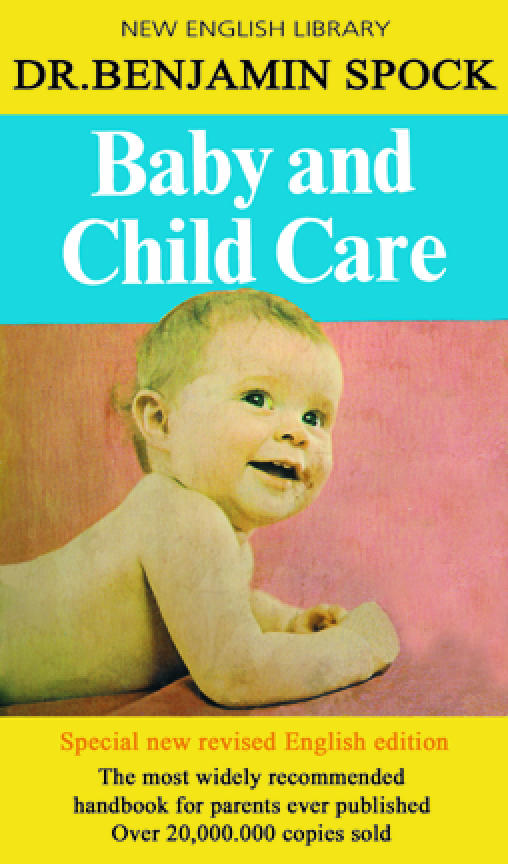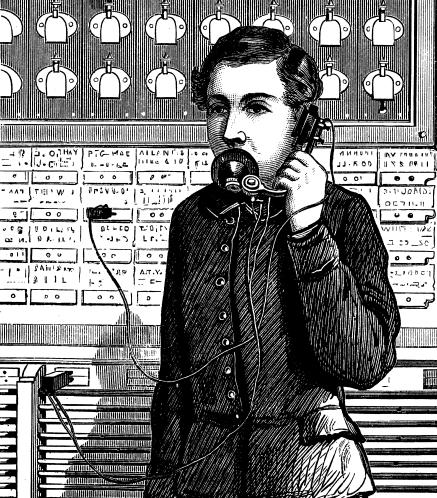Online patient-helpers and physicians working together: a new partnership for high quality health care (original) (raw)
In January 1998 Karen Parles, a 38 year old librarian at a major New York art museum, learned that she had lung cancer. “My doctors told me it was incurable, that I had only a few months to live,” she recalls. “I'm a lifelong non-smoker, so the whole thing came as quite a shock. I was pretty overwhelmed at first. But as soon as I could, I went on to the internet, looking for information. And I asked all my friends to help.
“I found a great support group for lung cancer, the Lung-Onc mailing list.1 The other patients on the list answered my questions, suggested useful sites, and gave me a lot of invaluable support. But even so, I had a hard time finding the information I needed. There was great stuff out there, but it was scattered across dozens of different sites. There was no comprehensive site that provided links to all the best online information for this disease.”
Through a friend of a friend, Karen heard that a surgical team at Boston's Massachusetts General Hospital was developing a new treatment for her type of cancer. “I went to Boston to see them and I was pretty impressed,” she says. “But having a lung removed by an unproved procedure still seemed pretty frightening, so I shared my fears with my Lung-Onc friends. I heard right back from eight or ten others who'd had a pneumonectomy. They assured me that I could do it and encouraged me to give it a shot. I was the twelfth patient to undergo the new treatment. That was nearly a year and a half ago, and so far, knock on wood, I'm doing fine.”
Like many other patients who have used online support groups,2,3 Karen found the information she found there invaluable. “The group was a great source of advice for dealing with day to day problems during my recovery. Patients who've had chest surgery often have trouble sleeping because every possible position makes your ribs hurt. The folks on the list can tell you exactly what to do.
Summary points
- Online patient-helpers with a chronic disease can be valuable resources for other patients with the same condition
- Patient-helpers do not compete with physicians; on the contrary, they can be valuable resources and allies for health professionals
- Although online patient-helpers do not have a physician's broad knowledge of a wide variety of medical conditions, their knowledge of their own condition can be impressive
- As more and more patients make use of online health resources, there will be increasing demands for providers to communicate electronically with their patients
- Many physicians who began exchanging email with their patients because of repeated requests from patients have become active promoters of doctor-patient email because of its benefits for physicians and provider organisations
“After I recovered from the surgery, I got to thinking: I'm probably alive today because I'm wired and well-connected. That didn't seem fair. So I started a website, lungcanceronline.org, to share the resources I'd found with other lung cancer patients.”
Karen's site offers access to in-depth information about lung cancer—listings of physicians who specialise in the various types of lung cancer, medical centres and clinical trials, links to bibliographic databases, medical libraries, conference proceedings, journals, and other medical references, as well as links for alternative medicine, online support groups, and survivors' stories. It offers access to Karen as well. “My Lung-Onc friends help me keep me up to date on the latest research and all the new treatments,” she says. “And if visitors to my site are having trouble finding what they need, I'll help them find it—or I'll go find it for them. And whenever I learn something new, I put it up on the site.”
AL-CASE, the Alliance for Lung Cancer Advocacy, Support, and Education (the only national US support organisation for lung cancer), now refers its members to Karen's site. Lungcanceronline.org is widely acknowledged as the definitive consumer site for lung cancer.
Why does Karen devote 20 or more unpaid hours a week to maintaining her site and helping other patients? “I suppose it's because it's so badly needed and no one else was doing it,” she says. “But it's incredibly rewarding. I get these effusively grateful emails from people I've helped.
“This happens at the museum library too, of course. I'll find someone a fabulous 17th century book on German woodcuts, and they'll be grateful. But when people say, ‘If it wasn’t for you, I'd be dead,' well, that's gratitude on a whole different level.”
Patients as helpers
“The work Karen is doing and the site she has created are extremely important contributions to the field,” says lung cancer specialist Roman Perez-Soler, associate director of clinical oncology at New York University's Kaplan Cancer Center. “When I first discovered Karen's site, I was so impressed that I called her up and went to see her.
“Karen represents a new type of patient we're now beginning to see. She has a sharp intelligence and a great intrinsic curiosity. She knows how to use the internet. And she appreciates both the patients' and the clinicians' points of view.”
Patient-helpers like Karen don't compete with what doctors do at all, Perez-Soler says. “On the contrary, they can be wonderful allies for doctors. She finds the best, high quality online materials for lung cancer, classifies them by topic, and makes them easy for other lung cancer patients to find. It's a wonderful complement to what we do at our clinic.”
But can patient-helpers like Karen really produce reliable online resources, even though they don't have a physician's clinical training? Perez-Soler believes they can. Clinicians must keep up to date on a wide variety of medical conditions while seeing dozens of patients a day. Patient-helpers like Karen will typically know only about their one disease, but since they can devote a great deal of time to it, their knowledge within that single narrow niche can be impressive.4
“Karen's site has become an important resource for all those concerned with lung cancer,” Perez-Soler says. “She helps us all keep up to date on the best online links, the best medical centres, the best treatments, and the latest research. She can present complex clinical information in a remarkably user friendly way. And because she's a patient herself, she knows how to emphasise certain topics that clinicians may consider secondary but are very important to the patient—their quality of life, the impact of their disease on their friends and family, and the psychological aspects of their illness.”
Patient-helpers like Karen can also help physicians market their services. “Karen has told me, ‘Please give me any materials on your clinical services you’d like other patients to see. I know how to edit it and where to put it so that the right patients will find it,' ” Perez-Soler says. “We think she'll be a great help in our efforts to let other patients know about the services we offer. She knows that world so well.”
Perez-Soler believes that his relationship with Karen may be a portent of things to come. “Karen and I exchange information on a regular basis,” he says. “I send her information I think she can use and she does the same for me. I've made a few suggestions for things she might add to her site and she's always extremely grateful. I've learned a great deal from her site—and from Karen herself as well.”
A new kind of patient
“We specialise in treating mesothelioma, and we recently put information about the treatments we offer up on our website. As a result, we now have patients coming in from all over the country,” Perez-Soler says. “This is a new type of patient we haven't seen before. When they have a serious medical concern, they don't just accept whatever treatment their local doctor offers. They'll spend hours and hours on the internet learning about their condition, communicating with other patients and clinicians who share their interests, and tracking down every lead they can find on the best new treatments.
“If it's not the patient, it's the niece or cousin or the son or daughter. There's a health problem in the family and this young person goes online and they all begin learning about their family member's condition. They'll track down the ten most promising clinical trials, identify the treatment option they decide is best, and fly across the country to get it.
“When they come to see us, they already know a great deal about their disease, the treatments offered at other centres, and the latest research findings. And they have the intelligence to catch on to what you tell them very quickly. They often show me what these online networks of patients are saying about me, and about our clinic, on the internet.”
Patients want online health information from their own doctors
A Harris poll in August 2000 concluded that 98 million adults have used the world wide web to find health information—up 81% from two years earlier.5 During that time, the number of internet users who have never looked for health information online has declined from 29% of all users to 14%. Thirteen per cent of those surveyed said that they looked up health information for themselves and family members “often,” 40% said that they did so “sometimes,” and 33% had “very occasionally” looked up such data.
Women are more likely to seek health information on the internet than men. Those who visit health related sites are, on average, older than other users of the internet, and people over 65, who require the most medical care, are increasing their use of online services faster than any other age group. And nearly all online patients say that they'd like to be able to exchange email with their own doctors.
Many physicians now report that a third or more of their patients are asking them about health information they've found on the internet, asking them to recommend the best websites for their conditions, and asking for their email addresses. A growing number of patients are asking their clinics and health plans how soon they will be offering doctor-patient email, consumer websites, online appointment scheduling and prescription refills, online selfcare guidelines, online support groups, and other online patient services.6
Dealing with patients' growing demand for online health information
This growing demand for online patient services poses a dilemma for many physicians. Some are still uncomfortable with computers or unfamiliar with the internet. Some say that they can't afford to answer patients' email unless they are paid to do so, or they worry that those with a product to sell or an axe to grind will beguile their patients with selfserving or misleading information. Other physicians feel uneasy when patients who have read about their diseases online, joined support groups, or consulted internet doctors then question their recommendations, disagree with their advice, or request inappropriate treatments.
Other physicians say they simply don't have the time to deal with patients' emails. “Just when am I supposed to read all these printouts, answer all these patient emails, and engage in these expanded discussions?” one busy internist wondered. “With my clinical schedule, I have trouble finding the time to go to the bathroom.”
But many physicians now realise that if they are unwilling or unable to meet their patients' growing need for online health information and advice, their patients will be forced to go elsewhere—and there are plenty of places for them to go. No one knows exactly how many websites provide health and medical information, but most experts agree that if, in addition to dedicated health sites, multipurpose sites providing health information are included, the number is well over 100 000. Hundreds of online support groups (for example, selfhelpgroups.com) now offer newly diagnosed patients a chance to communicate with experienced selfhelpers coping with the same condition. A rapidly growing number of commercial sites with names like allhealth.com, americasdoctor.com, drkoop.com, healthcentral.com, mediconsult.com, onhealth.com, and webmd.com offer a wide range of health resources. And a growing number of physicians and other health professionals have now hung out their shingle in cyberspace and would be only too happy to provide these patients with the health resources they are looking for.7
Many physicians have concluded that communicating with patients online offers as many benefits to providers as it does to patients. A recent Healtheon survey found that 33% of physicians are communicating with patients by email, up from an estimated 1-2% only two years earlier.
Benefits for physicians
Answering patients' questions by email can be surprisingly time efficient. Many of these questions require only a minute or two. Questions can be answered once, in considerable detail, then adapted and customised for other patients. Providers who compile lists of frequently asked questions or set up online patient groups find that they don't have to start again with each new patient.
Physicians can keep some visits short by inviting patients who can use the internet to send an email message listing their concerns, complete with links to the online resources they've found most helpful. And some of a physician's email traffic can be handled by other staff—or by volunteer patient-helpers with the same condition.8
Physicians can deal with email at their convenience. “I often answer email late at night or early in the morning. It eliminates a lot of phone tag,” says Daniel Sands, a Boston internist who teaches at Harvard's Center for Clinical Computing and maintains a website with resources for those interested in electronic communication between physicians and their patients.9 Sands provides patient guidelines for appropriate email use on the back of his business cards. He currently exchanges email with about 10% of his patients.
Once they start communicating with their patients online, most physicians are delighted to discover that it helps them save time and control their schedules—while making them more accessible to their patients and making it easy for them to provide patients with better guidance and support than ever before. The benefits are so striking that many physicians have begun urging their patients to communicate online when appropriate.
Physicians can save additional time by directing patients who are facing a new diagnosis or considering surgery or other complex treatments to websites where they can find in-depth information on these procedures. Patients who visit the Johns Hopkins Medical Center's pancreas cancer site (http://pathology.jhu.edu/pancreas) require only 15 minutes of face to face time with their physicians to absorb the same information it takes doctors half an hour to explain to their patients who don't use the internet.
“When these patients come in to see us, they already know a lot about their disease and the available treatment options,” says pathologist Ralph Hruban, webmaster for the Hopkins pancreas page, “so we can spend our time together dealing with the really important matters—like their chances of a cure, and the risks of the various procedures. They can make better decisions because they understand what's going on. We don't have to tell these patients where their pancreas is.”
Hopkins staff have been astonished by the traffic at their site, which has received rave reviews both from medical specialists and from the support groups devoted to this condition. Only 27 000 Americans are diagnosed as having pancreas cancer each year, but within the last 18 months the Hopkins site has been visited nearly a million times.
Providers considering online patient services may find it helpful to survey their patients' current internet use and to ask whether they would like to be able to communicate with their doctors online. This can be done by adding spaces for an email address to the forms you use to record patients' mailing address and phone number and asking each patient if they have an email address. Those who do should be asked how much time they spend online each week and whether they'd like to be able to communicate with their doctor, their clinic, or their provider organisation online. Those without email addresses should be asked if a family member could serve as an email go-between. The results of such surveys, performed at regular intervals, can help providers decide how and when to respond most appropriately to their patients' online needs.
From Dr Spock to drkoop.com
“Online patient services is where health care is headed,” Sands says. “Some of us had our doubts at first, but a century ago, many physicians had similar reservations about the telephone.”
“The greatest untapped resource in health care is the consumer,” says Don Kemper, president of Healthwise, a non-profit organisation in Boise, Idaho, that produces physician reviewed databases of selfcare information. “As we get better at providing patients with the information and support they need to become active members of the healthcare team, the quality of care, the cost of care, and the outcomes of care will all improve.”
“We're using online resources to encourage our members to partner with their physicians in new and creative ways—to do all they can to keep healthy and to help themselves and their family members through the process of diagnosis, treatment, and recovery when illness does occur,” says Tim Kieschnick, one of the chief strategists for the team developing online tools for patients of Kaiser health maintenance organisation. “Online services can help us take better care of our patients and can provide our members with a more satisfactory experience—while helping both clinicians and patients save time. Everybody wins.”
“Things are changing so quickly,” says Roman Perez-Soler. “But I think that what we've seen so far may be just a taste of what's yet to come. Many more patients are going to be coming to see their doctors very well informed. And they're going to be much more involved in making the key choices and decisions about their care.”
At a recent online health conference Harvard's Warner Slack, a cybermedicine pioneer who cofounded the Center for Clinical Computing, compared the rapid growth of online health resources to the publication of Benjamin Spock's book Baby and Child Care.10
“Dr Spock urged parents to take more responsibility for their children's health care—and told them exactly how to do it,” Slack recalled. “This sent shock waves through the paediatricians' offices. Many doctors of the time felt that that parents had no business becoming involved in their children's medical care. But it soon became clear that well informed parents could take much better care of their kids, so Spock's approach soon became standard paediatric practice.
“The internet is now providing the same kind of encouragement and support for grownups. This too was a bit of a shock to many physicians at first. But now that we're seeing how helpful and responsible these net-savvy patients can be, and discovering how online patient services can help physicians provide better care in less time, most doctors are concluding that this is a very good thing as well.”
Figure.
Patiently waiting for advice on health, last century . . .
Figure.
. . . but now health information is available instantly
Figure.

A seismic impact—comparable to that from online health resources
Figure.
The potent symbolism and medicinal properties of the pomegranate have made it popular through the ages (see p 1153)
Acknowledgments
Adapted from Patient-helpers and physicians working together: a new partnership for high quality healthcare. The Ferguson Report 1999;No 6 (www.fergusonreport.com/articles/fr109902.htm).
I gratefully acknowledge the assistance of Steven McGeady and Mike Hawash for their reviews of an early version of the manuscript.
Based on a presentation from the Millennium Festival of Medicine
Footnotes
Funding: This project was supported by the Intel Corporation's Intel Internet Health Initiative.
Competing interests: None declared.
References
- 1.Lung/Onc mailing list. http://listserv.acor.org/archives/lung-onc.html (accessed 17 Oct 2000).
- 2.Ferguson T. Health online: how to find health information, support groups, and self-help communities in cyberspace. Reading, MA: Perseus; 1996. [Google Scholar]
- 3.Ferguson T. A guided tour of self-help cyberspace. www.odphp.osophs.dhhs.gov/confrnce/partnr96/ferg.htm (accessed 2000). [Office of Disease Prevention and Health Promotion website; report written May 1996.]
- 4.Ferguson T. Can useful and reliable online health resources be produced by ‘medically unqualified’ persons? The Ferguson Report 1999;No 5. http://www.fergusonreport.com/archives/idx9907.htm (accessed 17 Oct 2000).
- 5.Harris Poll. www.ada.org/adapco/daily/archives/0008/0811web.html (accessed 29 Sept 2000).
- 6.Ferguson T. Digital doctoring: opportunities and challenges in electronic patient-physician communication [editorial] JAMA. 1998;280:1261–1262. doi: 10.1001/jama.280.15.1361. jama.ama-assn.org/issues/v280n15/ffull/jed80084.html (accessed 29 Sept 2000). [DOI] [PubMed] [Google Scholar]
- 7.Ferguson T. From doc-providers to coach-consultants: type 1 vs. type 2 provider-patient relationships. The Ferguson Report 1999;No 5. www.fergusonreport.com/articles/tfr07-01.htm (accessed 17 Oct 2000).
- 8.Kane B, Sands DZ.for the AMIA Internet Working Group, Task Force on Guidelinefor the Use of Clinic-Patient Electronic Mail. Guidelines for the clinical use of electronic mail with patients J Am Med Inform Assoc 19985104–111.www.aafp.org/fpnet/email/ (accessed 19 Oct 2000). [DOI] [PMC free article] [PubMed] [Google Scholar]
- 9.Electronic Patient Centered Communication Resource Center. http://clinical.caregroup.org/ePCC/ (accessed 17 Oct 2000). (Mega-site with links for doctor-patient email, Harvard Clinical Care Group.)
- 10.Keener C. Ferguson's Rx for doctors: stop resisting the net and get online. www.hno.harvard.edu/net_news2000/05.31/FergusonRx.5.31.html (accessed 17 Oct 2000). (Report of online conference on online health at Harvard School of Public Health, 31 May 2000.)


